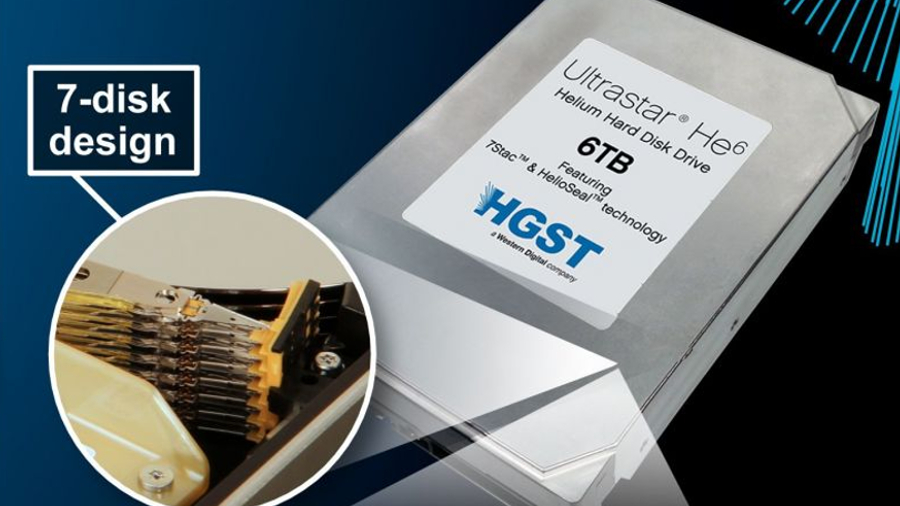World's first 6TB HDD is helium powered, looks to deflate storage costs
HGST's drive uses new tech to offer 50% more capacity

WDC-owned HGST has unveiled a new storage device that is the first of a new generation of hard disk drives that are helium-filled.
Unlike other hard disk drives on the market that use air, the Ultrastar He6 uses the second lightest element, which allows it to pack more platters and offer 50 per cent more storage space compared to the market's highest capacity HDDs (currently topping 4TB).
The secret is in the gas
Swapping air for helium also comes with a number of other advantages. Reducing drag (and therefore friction) for example means that the hard disk drive, which has thinner platters, is also quieter, cooler and consumes less power than previous generations. HGST quotes a drop of 4oC and a reduction of nearly 50% in Watts per TB thanks to a lower motor power.
Physically, nothing differentiates the He6 from a traditional hard disk drive other than the notable absence of a breather hole (the drive is hermetically closed to prevent the helium from escaping); it shares the same 1-inch x 3.5-inch form factor.
Sole contender
At the time of writing, a 4TB hard disk drive can cost as little as £130, putting the cost of the Terabyte to around £33, still higher than the all-time low of £20.
But expect the Ultrastar He6 to come at a much higher selling price at launch because it has no competition in the market place and will initially target a different less price-sensitive audience, namely data centres.
In the long term though, the rest of the competition will need to follow suit, which in turn will likely cause price of hard drives to dip even more.
Sign up for breaking news, reviews, opinion, top tech deals, and more.
- Fancy grabbing an external HDD? Here's our run down

Désiré has been musing and writing about technology during a career spanning four decades. He dabbled in website builders and web hosting when DHTML and frames were in vogue and started narrating about the impact of technology on society just before the start of the Y2K hysteria at the turn of the last millennium.